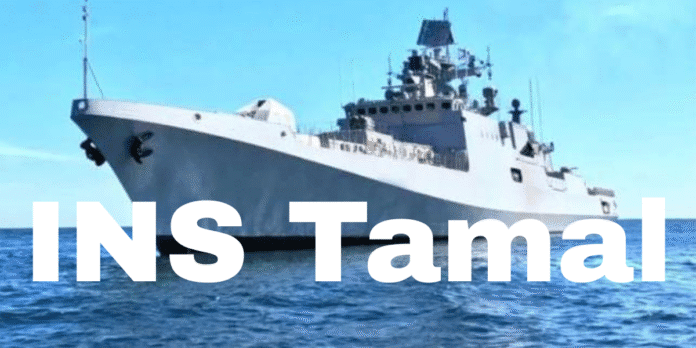India is steadily advancing toward self-reliance and technological superiority in defense. A key component of this transformation is the induction of modern warships that can dominate across multiple warfare domains. One such formidable addition to the Indian Navy is the upcoming INS Tamal, a stealth-guided missile frigate that symbolizes India’s growing maritime might and its strategic defense collaboration with Russia.
Expected to be commissioned by June 2025, INS Tamal will significantly bolster the Navy’s blue water capabilities and operational versatility in the Indian Ocean Region (IOR).
INS Tamal: Overview and Origin
INS Tamal is part of a 2016 India-Russia defense agreement to acquire four advanced stealth frigates, with two being built in Russia and two under Make in India at Goa Shipyard Limited (GSL). This agreement reflects India’s focus on enhancing its naval fleet while also boosting domestic defense production.
Tamal, along with its sister ships, belongs to a class of multi-role guided missile frigates designed for blue water operations. Its name, Tamal, meaning “sword,” signifies its offensive precision and strategic impact on naval warfare.
Key Features of INS Tamal
- Role and Strategic Value
INS Tamal is designed for operations across all dimensions of naval warfare—surface, air, subsurface, and electronic. It will act as a front-line warship capable of patrolling vast oceans, performing offensive strikes, anti-submarine warfare, and defensive shielding for carrier battle groups.
- Stealth Capabilities
The frigate’s stealth design minimizes radar cross-section and infrared signatures, making it harder to detect by enemy radars and sensors. This gives it a tactical advantage in contested waters and during offensive missions.
- Advanced Armament
One of INS Tamal’s most formidable weapons is the BrahMos supersonic cruise missile, capable of traveling at nearly Mach 3 with a strike range of 300–400 kilometers. It is designed for precision attacks on enemy ships and land targets.
In addition to BrahMos, the frigate is armed with:
- Anti-submarine torpedoes
- Rocket launchers
- Close-in weapon systems (CIWS)
Surface-to-air missiles These weapons enable Tamal to neutralize threats from submarines, aircraft, and surface vessels.
- Aviation Support
INS Tamal can operate a multi-role naval helicopter, enhancing its ability to conduct surveillance, anti-submarine operations, and search-and-rescue missions. The onboard helicopter hangar and deck are crucial for long-range maritime operations.
- Speed and Endurance
The frigate can achieve speeds of up to 30 knots (55 km/h) and has an operational range of approximately 3,000 kilometers per mission. This allows it to carry out extended deployments in the Indian Ocean and beyond.
Part of India’s Naval Modernization Drive
The commissioning of INS Tamal is a vital step in India’s journey to build a powerful and modern blue-water navy. As part of the four-ship deal with Russia:
The first frigate, INS Tushil, was commissioned in December 2024.
INS Tamal, the second Russian-built ship, is scheduled to join service in mid-2025.
Two more frigates are under construction in India’s Goa Shipyard, marking a significant achievement in indigenous defense production.
These ships will form a new class of advanced frigates with multi-domain operational readiness, playing a pivotal role in safeguarding India’s maritime interests.
Conclusion
INS Tamal is more than just a warship—it’s a symbol of strategic strength, advanced capability, and international defense collaboration. With stealth technology, state-of-the-art armament, and long-range operational capacity, INS Tamal will significantly enhance India’s ability to project power and defend its interests across the Indo-Pacific.
As maritime competition intensifies, vessels like INS Tamal ensure that the Indian Navy remains one of the most capable and modern forces in the world, ready to meet both conventional and asymmetric threats in the 21st century.


